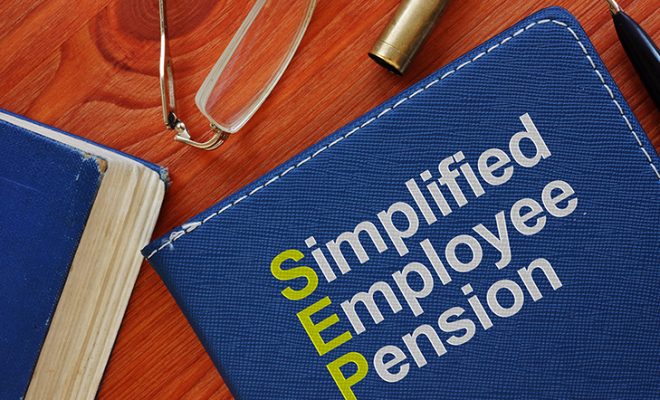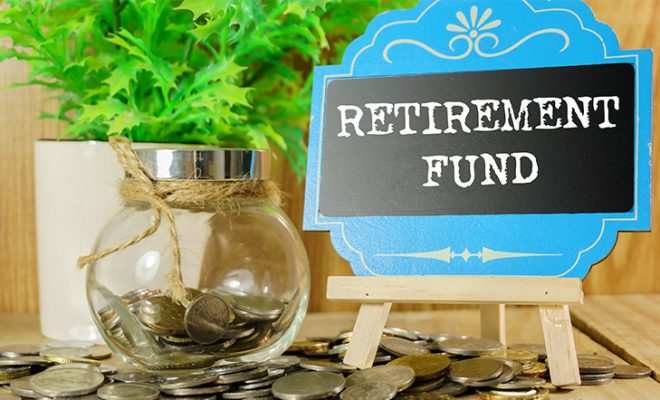10 Steps to Create a Robust Retirement Investment Portfolio

Building a retirement portfolio is not as complicated as it sounds. In fact, in many ways, it is like cooking a great meal. You need the right ingredients, the right proportions, and the patience to let it all come together. Set the heat just right, handle things with care, and after years of slow, steady cooking, you have got a perfectly prepared retirement fund ready to serve when you need it. The trick is knowing which ingredients to choose and how long to let them simmer. This article will walk you through exactly what you need to put together a retirement portfolio.
Below are 10 steps you may follow to build a robust retirement portfolio:
Step #1: Evaluate your retirement needs properly
Before you start building anything, whether it is a meal or your retirement portfolio, you need to know exactly what you are creating. Many people jump into saving and investing for retirement without a clear target in mind. They just throw in some money here and there, hoping it will be enough. But it usually never is. If you do this, you might get somewhere, but it is probably not where you wanted to end up.
Retirement is different for everyone. Your needs will likely differ from those of your friends or neighbors. You need to consider your lifestyle, including where you will live, your family responsibilities, health expenses, and even your travel dreams. Do you want to spend your winters in a cabin in the woods or summers on Cape Cod? You need to factor these choices in. Are you expecting higher medical bills later in life? You need to plan for it now.
You also need to factor in inflation. The cost of things could be twice as much in 20 years, for all you know. Therefore, use an online retirement calculator or consult with a financial advisor to determine the actual number you should aim for. Once you have that, you will have a starting point and a destination.
Step #2: Start investing as soon as you can
Start early!
Why?
Well, because the earlier you begin investing, the more time your money has to grow.
You can start small. That is perfectly fine. In fact, starting small lets you learn the tricks of the trade without putting your entire future on the line. When you invest early, you give yourself a massive advantage, which is time in the market. Time allows your investments to ride out the ups and downs. It also allows compounding benefits to work their wonders. Plus, it gives you room to make mistakes.
You will make mistakes at some point.
Everyone does.
The difference is, if you start at 20 and hit a rough patch at 30, you still have decades on your side to recover.
Now, let’s flip the scenario. Imagine starting at 40 and, by 50, a bad investment wipes out a significant portion of your savings. Suddenly, you are only a few years from retirement and scrambling to catch up.
Scary, right?
That is why time is your best friend in investing.
Step #3: Build a retirement investment portfolio that is balanced and diversified
If you have ever caught yourself wondering, “What should my retirement portfolio look like?” the short answer is – diversified. That is the golden word. No matter your exact investments or their weights, your retirement portfolio should be both balanced and diversified. Here’s why:
Imagine you have $100 to invest. If you put the entire amount into stocks, you are betting everything on one asset. Sure, if the stocks do well, you might make a lot of money. However, if they do not, your portfolio will suffer a setback, and your future will be put at risk. Instead, if you focus on balance, your future could look different. You could allocate $70 to stocks for growth and $30 to bonds for stability. Now you have got two asset classes working for you. When stocks have a bad year, bonds can help cushion the blow. And when bonds are not performing well, stocks may pick up the slack. This push-and-pull is what makes a diversified portfolio powerful. It reduces the chances of everything falling apart at once.
So, diversify your portfolio!
Step #4: Do not be shy to rebalance your portfolio to ensure it aligns with your evolving needs
While you diversify your retirement portfolio, you can’t just forget it. That perfect balance you created will not stay perfect forever. Your life, too, will evolve, and your financial goals will change. That is why rebalancing is so necessary.
Your portfolio is like a seesaw. Initially, you might set it at 70% stocks and 30% bonds because you are young, with nothing to lose, and focused on growth. But 20 years in the future, your risk appetite might not be the same. As you age and approach retirement, your priorities will likely change. In your 50s, you would be more interested in preserving what you have built rather than chasing growth. That is when you shift to something like 60% stocks and 40% bonds or even include more cash.
Rebalancing is a periodic task that helps manage your own retirement portfolio effectively. It is literally a balancing act, one that you will need to perform regularly if you want your portfolio to stay steady and in step with your evolving needs. Sometimes you will do it because your goals have changed. At other times, it may be due to market movements. Either way, rebalancing will help ensure that your portfolio still matches your current needs, not the ones you had ten or twenty years ago.
Step #5: Focus on equity, but do not underestimate debt
When you start building a retirement portfolio, it is almost instinctive to gravitate toward equity. Stocks get all the attention. They are the growth engines, the inflation fighters, the frequent topic of discussions at dinner parties. And yes, they deserve the spotlight. Equity can certainly propel your retirement portfolio forward over the long term. But it is also unpredictable.
That is why debt deserves a small seat at the table. Debt can be the steady hand that keeps your portfolio from wobbling too much. Bonds, for example, can deliver consistent income without the swings of stocks. And if you structure them smartly with a bond ladder, where you buy bonds that mature at different times, you can smooth out your returns. Doing so would ensure that you have a steady income to count on.
You can explore various types of debt options, such as government bonds, corporate bonds, municipal bonds, or Treasury Inflation-Protected Securities (TIPS), to help keep up with inflation.
Step #6: Include tax-advantaged tools in your arsenal
Tax is an enemy. It can feel like that annoying bully at school who is always trying to swipe a bite of your lunch. You can’t make them disappear, but you can make sure they get as little as possible from your plate. And the best way to do that? Do not wait until the bully is already reaching for your sandwich. Instead, plan ahead.
Many people think about taxes only when filing their returns. At this time, they are scrambling to find tax deductions, credits, or exemptions. That is a reactive move. The smarter play is to go on the offense. That is where tax-advantaged tools come in. Accounts like a 401(k) or an Individual Retirement Account (IRA) can serve as your financial aid. These are available in two variants – traditional and Roth. Each works differently when you pay taxes.
Traditional accounts give you tax breaks today and let your money grow tax-deferred until retirement. Roth accounts are taxed now, but your withdrawals in retirement can be completely tax-free.
With the right tools, you enjoy tax diversification! This gives you more options down the road, especially when you’re uncertain about future tax rates.
Step #7: Be ready with a reliable cash reserve
Having a cash reserve is IMPORTANT. You have probably heard it referred to as an emergency fund, and that is exactly what it is. It is money you can tap into when things go wrong.
Imagine a scenario where you lose your job unexpectedly. The severance pay will keep you going for a while, but when the bills keep coming, and no job in sight, you will eventually hit a roadblock. Without a cash reserve, your first instinct might be to dip into your retirement savings. But doing that before retirement can derail your long-term growth. If you face an emergency after retirement and decide to withdraw prematurely from your investments, it can eat into the stability you worked so hard to build.
That is why a cash reserve is essential at every age and stage of your financial journey. You should aim to keep it somewhere safe, accessible, and ideally, one that earns a little interest. High-yield savings accounts are a great option. Certificates of Deposit (CDs) can also be a suitable option if you do not require instant access, as they offer fixed interest rates for fixed terms. Money market accounts are another option. They pay interest based on current market rates, while still allowing you to access your funds when needed.
Step #8: Focus on creating a withdrawal strategy
Your retirement portfolio requires a withdrawal strategy to ensure you know how to utilize it without depleting it too soon. Without one, you could end up taking money out too quickly, paying unnecessary taxes, or simply burning through your savings faster than you imagined.
Consider an example where you have built a retirement fund worth $750,000. If you pull out the entire chunk at once, it could trigger massive tax bills and leave you scrambling years down the line. Hence, you need a plan for how much to withdraw, when to withdraw, and from which accounts. And, the best time to design this plan is not necessarily after you retire, but now!
By thinking ahead, you can structure your investments around your future needs. For example, choosing between a Roth IRA and a traditional IRA is not just about taxes today, but about taxes when you are withdrawing later. You also need to think about timing. 401(k)s and IRAs generally can’t be touched before 59½ without penalties, and Social Security pays more if you delay claiming.
So, what fills the gap if you retire early or delay benefits? That is exactly what a withdrawal strategy can help you answer.
Step #9: Always have insurance
Skipping insurance to save a few bucks is the perfect example of being penny-wise, pound-foolish. You might save a small amount now, but one major emergency can wipe out years of savings in a single blow. So, buy the essential insurance policies you may need, even if the premiums seem high for something that hasn’t happened yet.
Long-term insurance is critical to have in your retirement portfolio. You can buy it in your 50s, as it prepares you for the years ahead. Health insurance is a must at every age. Homeowners’ or renters’ insurance is crucial if you live in areas prone to burglary, fires, or other mishaps. Life insurance ensures your loved ones are financially secure in your absence. Consider purchasing it if you have family members who rely on you for financial support.
Remember, retirement funds alone can’t cover unexpected disasters. Your retirement portfolio is designed to support your lifestyle, not to cover catastrophic expenses. Insurance is your shield against the blows you never see coming! So, you must prioritize purchasing it. While it may not be an investment that brings in yields, it provides security, protection, and also confidence and comfort.
Step #10: Hire a planning buddy – a financial advisor!
How can I build a robust and diversified retirement portfolio?
One of the best ways to build a retirement portfolio that actually works is to bring in a financial advisor. A retirement portfolio, as discussed earlier, must be tailored to individual needs. It should meet your goals, match your lifestyle needs, and prepare you for the long term. Customization of this kind requires time, effort, and expertise.
This is exactly what a financial advisor brings to the table. They can help you assess your emergency fund and insurance requirements, build a well-diversified portfolio, and rebalance it when needed. They can also guide you to start early, or if you have begun later in life, help you make wise moves at your current stage.
From planning withdrawals to ensuring your money lasts through retirement, a financial advisor can make the journey smoother and more secure. Hiring one clearly has lasting benefits, so why not get started today?
The Bottom Line: Turning These 10 Steps into Action
- You need to know exactly what you will need in retirement. So, figure out your lifestyle goals, significant expenses, and even dream plans so you have a clear target.
- Start investing early and give your money time to grow.
- Spread your investments across different areas so you don’t end up putting all your eggs in one basket.
- Check in on your portfolio and rebalance regularly.
- Do not ignore safer options. Debt investments can provide stability when markets become unstable.
- Use tax-friendly accounts, so you can make the most of tools that help you grow money without losing too much to taxes.
- Maintain a cash cushion to avoid being forced to dip into your retirement savings too soon.
- Plan how you will withdraw money. Remember, a smart withdrawal strategy keeps your savings from running dry.
- Protect yourself with insurance.
- And lastly, get expert help! Our free advisor match tool can connect you with 2 to 3 advisors who can best meet your financial needs.
For further information on creating a suitable retirement plan for your unique financial requirements, visit Dash Investments or email me directly at dash@dashinvestments.com.
About Dash Investments
Dash Investments is privately owned by Jonathan Dash and is an independent investment advisory firm, managing private client accounts for individuals and families across America. As a Registered Investment Advisor (RIA) firm with the SEC, they are fiduciaries who put clients’ interests ahead of everything else.
Dash Investments offers a full range of investment advisory and financial services, which are tailored to each client’s unique needs providing institutional-caliber money management services that are based upon a solid, proven research approach. Additionally, each client receives comprehensive financial planning to ensure they are moving toward their financial goals.
CEO & Chief Investment Officer Jonathan Dash has been covered in major business publications such as Barron’s, The Wall Street Journal, and The New York Times as a leader in the investment industry with a track record of creating value for his firm’s clients.










